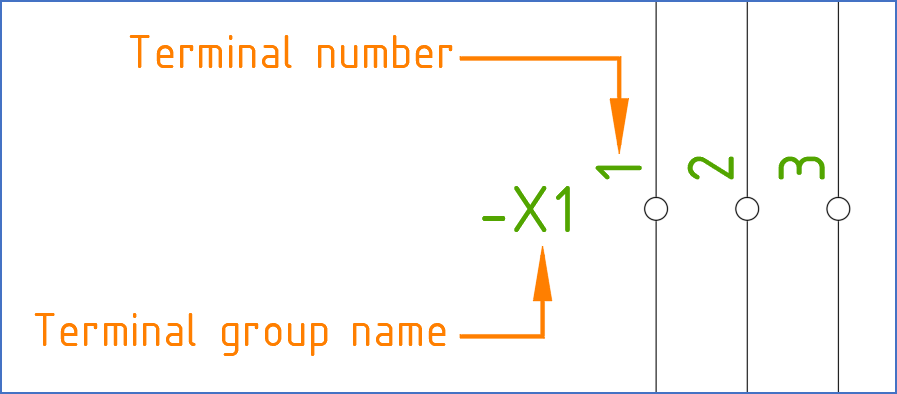|
<< Click to Display Table of Contents >> Item designations for terminals |
  
|
|
<< Click to Display Table of Contents >> Item designations for terminals |
  
|
By definition, each single terminal is a device of its own, which therefore should have a unique item designation. A typical item designation composition according to an IEC1346 implementation with three aspects and two transitions is as follows:
= Function/plant |
+ Location |
– Component type letter code |
Counting number |
: Terminal number |
Example: =A1+D3-X1:1
The interesting thing here is that the terminal number is included in the item designation of terminals. For other types of devices, the connection point number is not included in the item designation.
Example: =A1+D3-K1
So, this differs terminals from other devices. The item designation of a terminal, excluding the terminal number, must therefore have a name of its own (for example =A1+D3-X1 or -X1 for short). That is not an item designation!
The name that is written alongside the first terminal in a group of terminals, is a common name for all terminals of that group. We have chosen to call a group of terminals with a common name for a “terminal group”. The name of a terminal group will then naturally be referred to as “terminal group name”. The item designation of a terminal therefore contains of terminal group name and a terminal number.
•A group of terminals that have a common item designation, except for the terminal number, is called a “terminal group”.
•The name of the terminal group, meaning the item designation with terminal number excluded, is consequently called “terminal group name”.

Figure 1247: “Terminal group name” and “terminal number”